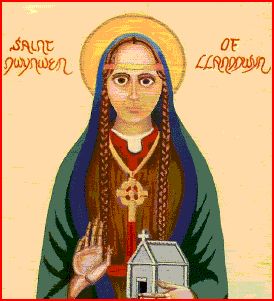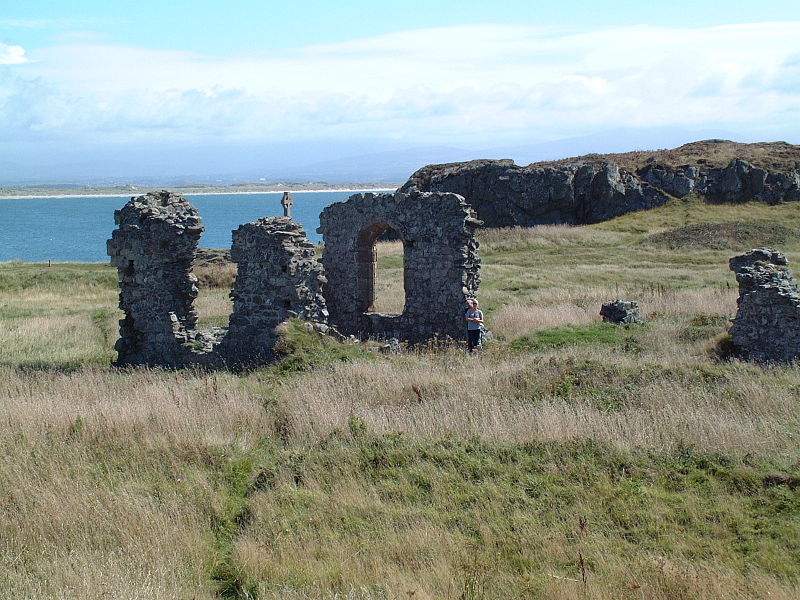I make no apologies for being unashamedly patriotic today
MARCH THE FIRST IS ST DAVID'S DAY!
I have put my Welsh flag up in the garden and am wearing my daffodil. The daffodils in the garden arrived several weeks ago - very early, I'm usually willing one or two at least to open by St David's Day, but I guess it's all down to gobal warming!


(The leek is also a traditional Welsh symbol worn on this day, because St David is said to have ordered his Welsh soldiers to wear leeks in their helmets when they went into battle against the Saxons,but the daffodil is prettier and doesn't smell so strongly!😄 )
ST DAVID'S DAY TRADITIONS
Many people outside Wales don't realise that St David's Day is as important to the Welsh as St Patrick's Day is to the Irish. Each year, the annual St David’s Day parade takes place on 1st March, in Cardiff. A colourful parade takes place in the city centre. There will be parades across the whole of Wales including in Aberystwyth in Cardiganshire (my hometown), and in Caernarfon, Llandudno and Wrexham, plus a variety of St David's Day Celebrations in Bargoed, Blackwood, Caerphilly And Risca Town Centre.
The day is also commemorated with children taking part in concerts called 'Eisteddfods' in schools or village halls, although today being Sunday, they will probably have them tomorrow instead, if they didn't have them on Friday.)
FOOD
 |
| Cawl |
A variety of traditional Welsh food is eaten, in particular, cawl, a clear soup,made of course,with leeks as a prime ingredient, eaten with bread and cheese. Its meat content varies with the region. Where I come from, which is mountainous sheep country, it is always lamb or mutton, but it can also be fish, bacon or sometimes beef. The broth or soup also includes potatoes, carrots, and other seasonal vegetables.
 |
| Welsh cakes |
 |
| Traditional Welsh costume |
Then there are Welsh cakes, a kind of scone, rolled out as a dough with currents, and baked on a griddle or 'bakestone'and absolutely delicious served hot with butter, and just as good cold, sprinkled with a little sugar,. Alsos bara brith, a malty fruit cake made with tea, cut like bread and spread with butter, and Welsh rarebit, toast covered with rich cheese sauce made with beer and seasoned with Worcester sauce, then poured onto the toast and grilled until bubbling.
ST DAVID

So who was St David. and why March the 1st?
Well he died on that day in 589AD.
Dewi (the Welsh form of David) was born to Welsh nobility in the late fifth or possibly early sixth century. The Anglo-Saxons had invaded Britain by that point and had driven most of the inhabitants into what was known as the Celtic Fringe: Scotland, Ireland, Wales, Cornwall, and Brittany.
He was educated in Cardiganshire and then went on pilgrimages, founding religious centres across Wales and England, including one at Glastonbury. He even travelled as far as Jerusalem, where he was made an archbishop.
He eventually settled at Glyn Rhosyn (now St Davids), in south west Wales, where he established a religious community. Many miracles have been attributed to him.including causing the ground to rise beneath him when preaching so that everyone could see and hear him.
When David died he told his devoted followers to: "Be cheerful and keep your faith and belief, and do the little things that you have heard and seen through me."
His remains were buried at the Cathedral of St Davids in Pembrokeshire. It became a popular place of pilgrimage and two pigramages to St Davids were said to equal one to Rome and three equalled one to Jerusalem.
THE RED DRAGON
To end with I thought I'd tell you why the red dragon (Ddraig Goch) appears on the flag of Wales. You might be surprised to learn that it relates to the Arthurian legends.
King Vortigern came to the mountains of Eryri, in Gwynedd. On the summit of one of these, which was then called Dinas Ffaraon, he decided to build a fortress.
Then the king sent for artificers, carpenters, and stonemasons, and collected all the materials for building. In the night, however,they all disappeared. Materials were procured from all parts a second time, but a second time they disappeared in the night. A third time everything was brought together for building, but by morning again not a trace of them remained.
Vortigern called his wise men together and they told him he must find a child born without a father, put him to death, and sprinkle with his blood the ground on which the citadel was to be built.
The king thought the advice of his wise men was good and sent messengers throughout Britain in search of a child born without a father.When they eventually found one, they took him to Vortigern the king.
The boy asked why he had been brought before the king and when they told him he was to be sacrificed to enable Vortigern to build a fortress, he told the king his wise men were wrong and that there was a pool beneath the ground where they were trying to build. In the pool were two vases and in the vases a tent. in the tent were two sleeping dragons, one white and one red.
The dragons fought each other, and the eventually the red one one the battle and drove the white one away.
The boy told the king and his wise men that the pool was the emblem of this world, and the tent that of Vortigern's kingdom. The red dragon was the king's, but the white serpent was the dragon of the Saxons, At length, however, his people would rise and drive the Saxon race beyond the sea. But he must seek another place to build his citadel.
The boy's life was spared. He became famous as the great magician Myrddin Emrys , or Myrddin ab Morfryn (Merlin, as he is called in English), and the mountain on which he proved his mighty power was called Dinas Emrys instead of Dinas Ffaraon. Thereafter the red dragon became the symbol of Wales and is portrayed on the Welsh flag. (Myrddin is the hero of one of my books a short novella,
'Dancing With Fate.')
Finally, I thought you might like the recipe for
Welshcakes. Traditionally cooked on the hob, on a 'bakestone' they can also be cooked in a heavy frying pan.
Ingredients
• 225g/8oz self-raising flour
• 110g/4oz salted butter, cut up small
• 85g/3oz caster sugar, plus extra for dusting
• handful of currents or sultanas
• 1 egg, beaten
• milk, if needed
• extra butter, for greasing
Method
1. Sift the flour into a bowl and add the butter.
2. Rub with your fingertips, until the mixture resembles breadcrumbs.
3. Add the sugar, fruit and beaten egg and mix well to form a ball of dough, using a splash of milk if needed.
4. Roll the dough out on a floured board to a thickness of about 5mm/½in.
5. Cut into rounds with a 7.5–10cm/3-4in plain cutter.
6. Rub the bakestone or heavy iron griddle or frying pan with butter, wipe away the excess and place on the hob until it is heated through.
7. Cook the Welsh cakes a few at a time for 2–3 minutes on each side, or until golden-brown.
8. Remove from the griddle and dust with caster sugar while still warm. Delicious eaten hot but can also be eaten cold, spread with a little butter
For insider news and subscriber-only info, subscribe to my occasional Newsletter. I promise not to spam and your in-box will only see an email from me every 3 or 4 months or so - unless of course I have something really Newsworthy to share! I also promise that I never have and never will share your information or email address with anyone or any organisation. http://madmimi.com/signups/196357/join
 An exciseman, overtaken by night, went to a house called Ty Felin, (Yellow House) in the parish of Llanynys, and asked for lodgings. Unfortunately the house was a very small one, containing only
An exciseman, overtaken by night, went to a house called Ty Felin, (Yellow House) in the parish of Llanynys, and asked for lodgings. Unfortunately the house was a very small one, containing only 















































